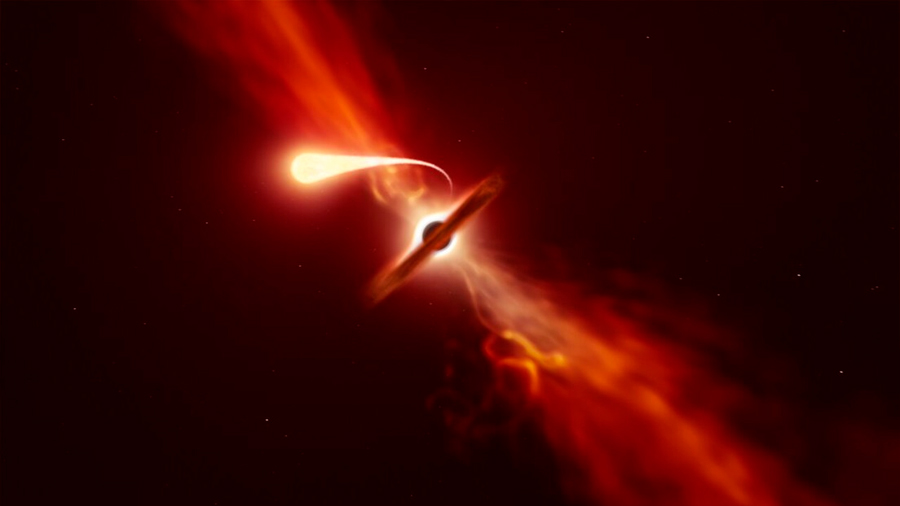It is the first direct observation of light from behind a black hole in a phenomenon predicted by Einstein’s theory of general relativity, but not yet confirmed.
For the first time, astronomers have observed light coming from the other side of a black hole, which is curved as a result of the warping of spacetime around an object. These observations coincide with Albert Einstein’s 1963 predictions about how gravity bends light around black holes, as described in his theory of general relativity.
An international team led by Dan Wilkins of Stanford University (USA) used ESA’s XMM-Newton telescopes and NASA’s NuSTAR space telescopes to observe extremely bright flashes of X-ray light coming from the black hole’s vicinity.
The researchers focused on observing the black hole’s mysterious “halo”, which is the source of bright X-ray light and is believed to be caused by gas constantly falling into the black hole, causing it to warm up and form a disk around it. During the observations, the science team also saw a series of smaller flashes. The researchers determined that they were the same as the X-ray flashes, but were reflected from the back of the disc.
“The light entering that black hole doesn’t come out, so we shouldn’t be able to see anything behind the black hole. The reason we can see is that the black hole distorts space,” explained Wilkins, lead author of the new study, which was published in Nature. , bending light, and wrapping magnetic fields around itself.
The observed black hole is located at the center of spiral galaxy I Zwicky 1, 800 million light-years from Earth, and is 10 million times larger than our Sun.
50 years ago, when astrophysicists started speculating about how a magnetic field would behave near a black hole, they had no idea that we might one day have the techniques to directly observe it and see Einstein’s general theory of relativity in action,” said Roger Blandford. , co-author of the article, adapted from the Phys.org portal.
“This is the first time we’ve seen a direct signature of the way the light behind the black hole bends into our line of sight, due to the way the black hole curves into the space around it,” Wilkins added.
Source: elciudadano.com

“Problem solver. Proud twitter specialist. Travel aficionado. Introvert. Coffee trailblazer. Professional zombie ninja. Extreme gamer.”




More Stories
With a surprise in the case: a strange cell phone from Nokia was introduced
PlayStation Stars: what it is, how it works and what it offers to its users | Sony | video games | tdex | revtli | the answers
t3n – Digital Pioneers | digital business magazine